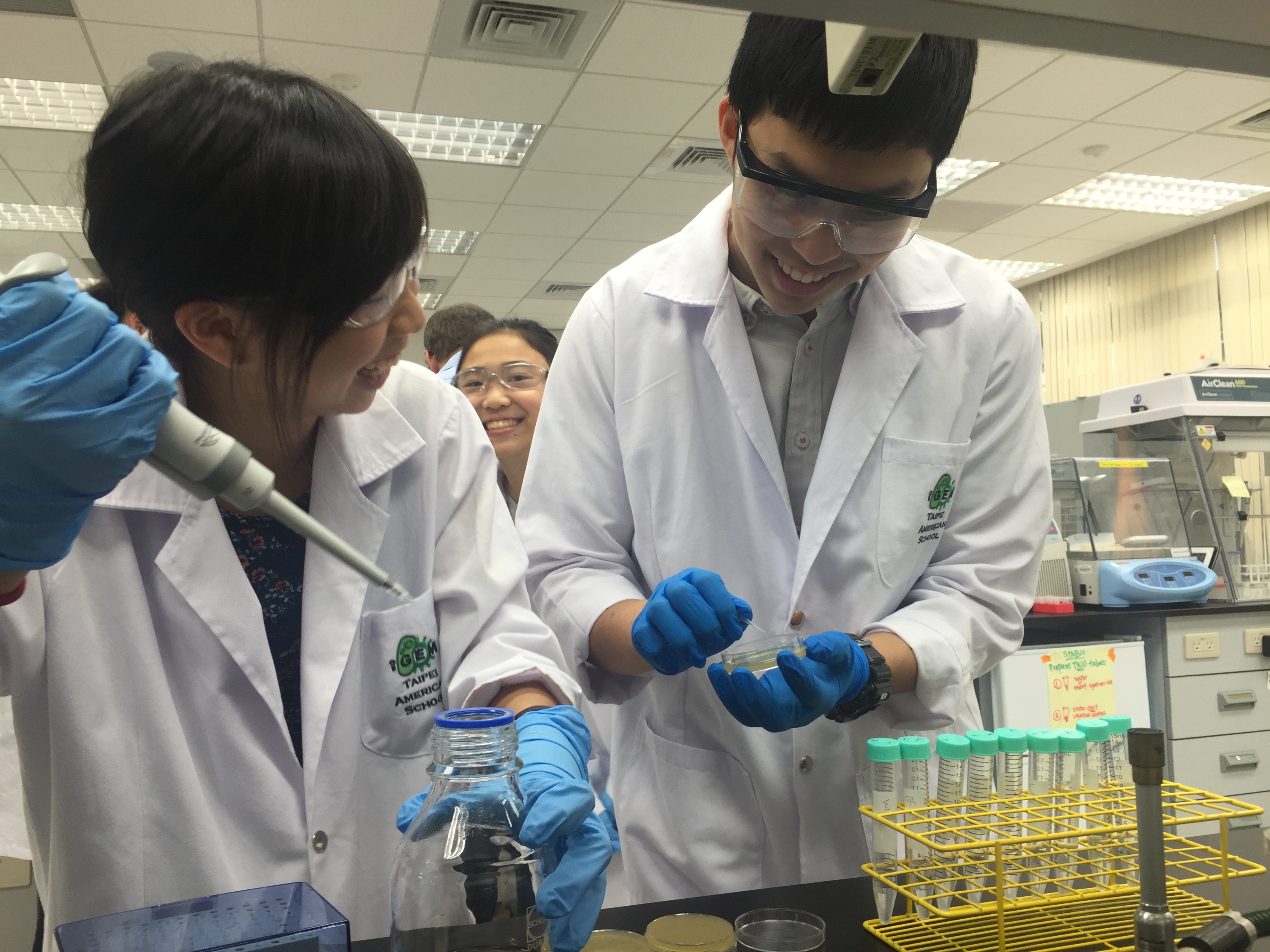Safety
Safety always comes first. Before proceeding with our project and lab, we must first ensure that all aspects will be completely safe. Problems with safety arise from three features: biosafety, biosecurity, and lab safety. To optimize safety, we must protect ourselves, others, and the environment from any potential harm. To do so, we keep all experiments within TAS labs, where the flow of substances can be tightly controlled. Additionally, according to the World Health Organization (WHO) laboratory Biosafety Manual, the TAS lab is classified as Biosafety Level 1, which means the lab does not use anything that is potentially harmful to researchers; for example, we do not use any pathogenic organisms. These regulations maintain both researchers’ safety and that of the public and environment.
Biosafety
Very few hazardous chemicals and solutions are used in the TAS research lab. For instance, we do not use EtBr for gel electrophoresis. Instead, we use a safer nucleic acid stain called Seeing Safe DNA Dye. Nevertheless, all chemicals and solutions are still treated with all due respect, care, and caution. MSDS are stored on our lab computers and in a folder on the lab technician's desk.
E. coli strains that are used in our lab have very limited abilities of survival outside the lab. As a result, they are highly unlikely to survive or disseminate. Therefore, there is no specific environmental risk associated with the E. coli strains. Nevertheless, we still regulate the trash disposal, assiduously sorting waste into the correct bins, neutralizing liquid waste with bleach before disposal, and autoclaving for sterilization.

Risk Reduction Methods
All members of our iGEM team are trained for lab safety in all aspects for months before starting our project, and we have many capable instructors to guide us as well.
While working with E. coli (DH5alpha), we follow safety rules set by our lab instructor. Some rules include wearing gloves and lab coats during experiments, sanitizing lab benches with ethanol before and after experiments, washing hands with soap after experiments, performing experiments under adult supervision, no eating and drinking in the lab, learning how to safely dispose bacterial liquid waste, how to correctly dispose used equipment (tubes, eppendorfs, and plates), and learning emergency responses such as the eyewash and emergency shower.
Lastly, this year, we have created our own Bio Safety Committee comprising of three research teachers: Dr. Teresa Chiang, Mr. Jude Clapper, and Mr. Alex Dezieck. The committee oversees proper sanitized work area conditions by checking on disposal of Petri dishes and liquid wastes, and teaching proper laboratory techniques.
Further Questions
What Risks Might your Project Pose, if it were Fully Developed into a Real Product That People could use? How would you Reduce Those Risks?
If our project is fully developed into a real product, it poses potential risks of degraded nanoparticles potentially causing uneasiness in the eye and GSH/25HC accumulation. To reduce these risks, we will have to set up a degradation test, identify what degraded chitosan nanoparticles become, and test for side effects in the eye. For now, we use modeling to optimize the amount of protein that we can deliver to the eye via nanoparticles. This method will reduce the risk of GSH or 25HC accumulation in the eye.
What safety procedures do you use every day in the lab? Did you perform any unusual experiments, or face any unusual safety issues?
The WHO laboratory biosafety committee recognizes TAS’s lab as Biosafety Level 1, and none of the experiments conducted within the lab were unusual. Students receive safety methods training and protocols from both faculties at TAS and National Yang-Ming University’s Center of Environmental Protection and Safety and Health (http://ces-e.web.ym.edu.tw). Unusual safety issues did not occur.
Did you face any safety problems in sending your DNA parts to the Registry? How did you solve those problems?
Our DNA does not code for anything hazardous, and we did not encounter any safety issues when sending our DNA parts to the Registry.

×
Zoom out to see animation.
Your screen resolution is too low unless you zoom out


